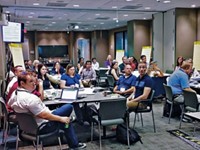Advertisement
Grab your lab coat. Let's get started
Welcome!
Welcome!
Create an account below to get 6 C&EN articles per month, receive newsletters and more - all free.
It seems this is your first time logging in online. Please enter the following information to continue.
As an ACS member you automatically get access to this site. All we need is few more details to create your reading experience.
Not you? Sign in with a different account.
Not you? Sign in with a different account.
ERROR 1
ERROR 1
ERROR 2
ERROR 2
ERROR 2
ERROR 2
ERROR 2
Password and Confirm password must match.
If you have an ACS member number, please enter it here so we can link this account to your membership. (optional)
ERROR 2
ACS values your privacy. By submitting your information, you are gaining access to C&EN and subscribing to our weekly newsletter. We use the information you provide to make your reading experience better, and we will never sell your data to third party members.
Careers
Science Teachers Need New Methods
by Jessica Morrison
January 25, 2016
| A version of this story appeared in
Volume 94, Issue 4
Opportunities to improve classroom curricula and obtain professional development are fewer for middle and elementary school science teachers than high school science teachers and for those in districts with higher percentages of low-income students, says a report from the National Academies. The adoption of the Next Generation Science Standards in 2013 represented a shift in science curricula meant to unify the concepts, core ideas, and scientific practices that K–12 students are taught nationwide. “Many science teachers will need to alter the way they teach to achieve this new vision of the science education of K–12 students,” says Suzanne Wilson, who chaired the committee that prepared the report. But the challenges that teachers face and the support they receive in adopting and implementing new teaching methods differ by grade level and district income, the National Academies found. The report recommends that district leaders embed professional development opportunities for teachers within the workday, develop external partnerships with scientists, and choose learning opportunities for teachers on the basis of the best available research.



Join the conversation
Contact the reporter
Submit a Letter to the Editor for publication
Engage with us on Twitter